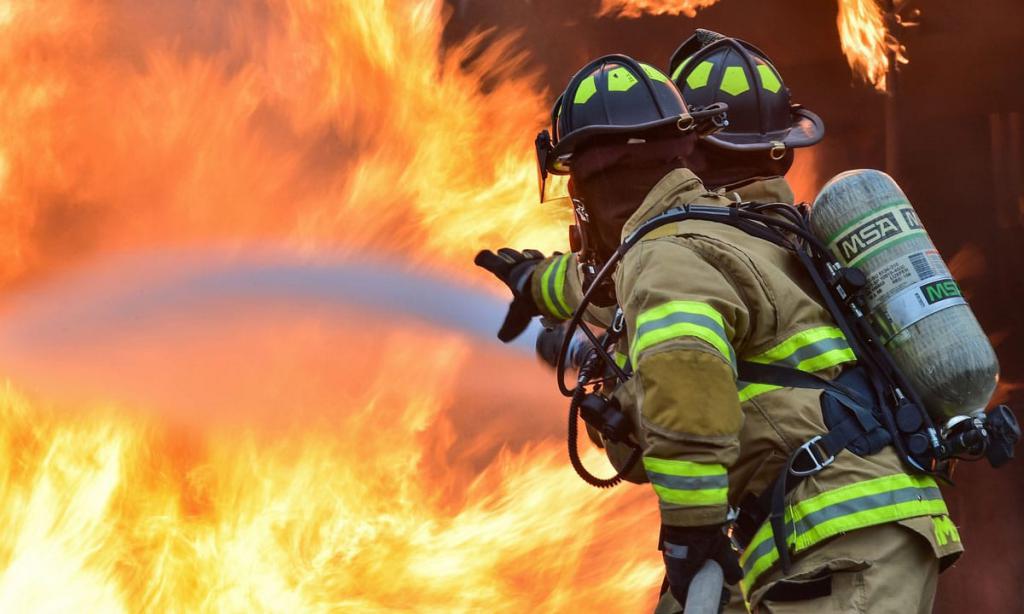Among the general safety measures, fire fighting methods stand out. Even in the century of intensive technological development, it is impossible to prevent the risks of fire at all objects of economic operation. Therefore, the tactics of managing forces and assets in a fire remains highly significant, since it directly affects the success of saving lives and, in general, reducing damage from fire.
Basic principles of fire fighting
The principles of extinguishing fires are formed on the basis of substantial and objective laws that reflect the stable relationships between the characteristics of the fire extinguishing process. For example, in every tactical action in the fight against fire, whether deploying, supplying fire extinguishing means or conducting rescue operations, the same cause and effect relationships work. Of course, there are factors of influence that can disrupt these connections, but modern models of organization take into account external influences. So, the principle of activity activity during fire fighting is put forward to the forefront of the management of forces and means in a fire. This principle is expressed in perseverance, intensity, initiative and willingness to take responsibility. It implies a bold but reasonable use of the best methods and means applicable in the specific conditions of extinguishing a fire.
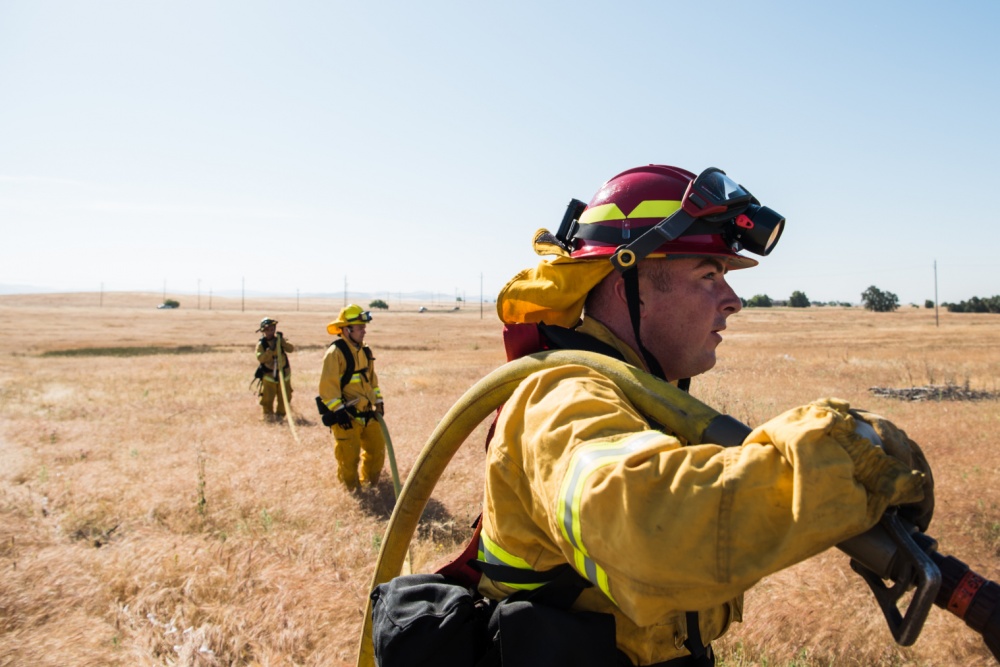
Another important principle involves the continuity of actions aimed at eliminating the fire. It is associated with the principle of activity and rather complements it, increasing the overall effectiveness of the fight against fire. In other words, regardless of the human factor, weather phenomena and time of day, the fire should be eliminated actively and without interruptions. These are general principles that have been formed historically and today, thanks to an unprecedentedly high technological level of development, we can talk about a multiple increase in their strength.
Also, depending on the situation, the basics of command and control of forces in a fire prescribe principles such as focus on the decisive direction and rationality of the use of resources. These are conditional rules, since not in every case there is an urgent need to save consumables and not always the extinguishing agents are faced with a choice between several areas of elimination of fire sources, in particular.
What actions does fire fighting provide?
From the point of view of tactics, fire extinguishing can be considered precisely as an organizational process during which coordination of operational actions is carried out. What provides for the management of forces and equipment in a fire? The definition of a set of organizational measures in this case can be formulated as a list of actions aimed at ensuring the safety of people, as well as minimizing damage to material values and, in principle, eliminating foci of burning. Specifically, this implies the implementation of a wide range of operational and tactical measures, which may not necessarily be directly related to extinguishing the fire. The fight against the flame as such qualifies as military operations, but the management of forces and means also provides for the coordination of the departure, movement, reconnaissance, deployment and collection of fire data.
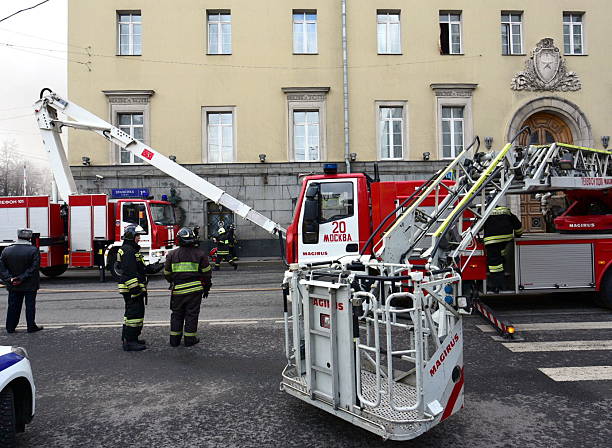
A number of actions are constant, that is, performed with each fire signal, regardless of the characteristics and conditions of the situation.Such actions include following to the place of the call and returning, reconnaissance, etc. Such actions as opening structures, saving people and animals, and removing smoke are intermittent. Also, parallel control of forces and assets in a fire is not ruled out. These are situations when different types of actions can be coordinated at the same time - for example, deployment and supply of extinguishing agents by different units. Networking provides the ability to more accurately manage tactical actions.
Objective environment parameters and their prediction
The main parameters that characterize the processes of elimination of fires and are taken into account when organizing the management of forces and assets in a fire include the following:
- Travel time of the fire department to the designated place.
- The time of operational actions from the moment of arrival at the call point to departure after the completion of the fire.
- Duration of direct fire extinguishing.
All marked time parameters of the fire fighting process are considered as random continuous values. However, by compiling mathematical functions, having specific data, it is possible to identify patterns and predict approximate time indicators for the performance of certain stages of combat missions. An example of such patterns may be the time of employment or direct extinguishing, which will always be longer than the period of general operational actions.
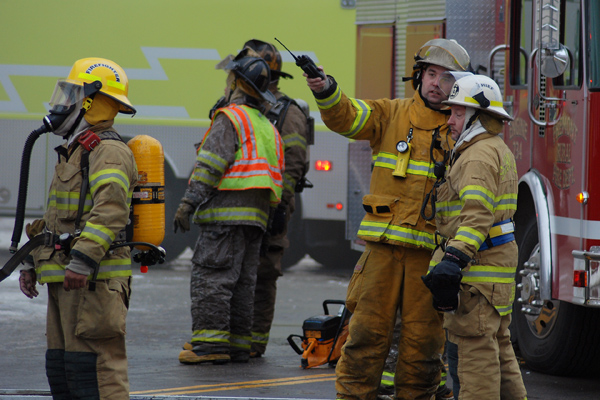
With more detailed control of forces and equipment in a fire, additional input parameters are used, such as the duration of the supply of extinguishing materials, the volume of water supplies, the size of the composition, etc. These data allow us to more accurately predict the time it takes for individual actions to be performed in parallel or in series. The need for such forecasts is determined, in particular, by the need to assess the workload of calculations in the context of the receipt of several signals about a fire in the city.
The essence of the management of forces and equipment in a fire
The key concept is operational management, which provides direct control over units during fire fighting. This is an activity, the result of which will be the development of decisions and direct command of personnel in order to ensure the successful completion of tasks.
If we consider the control of units in a fire from the point of view of the classical management model, then two participants in the process - headquarters and actors, that is, participants in fire fighting - will come to the fore. In this regard, the definition of control of forces and assets in a fire can be represented as follows: a system of information exchange between command and unit, in which the former receive information about the situation in the fire, and the latter take orders and commands to perform specific tasks. Moreover, in this system does not appear the process of developing solutions, which is the most important factor in fire fighting. As a rule, decisions are made by the management of the fire service in two steps:
- Assessment of the situation and forecasting.
- Develop a firefighting plan with a definition of tactics.
Next, specific orders and teams are formulated for one or more units that will be involved in operational-tactical events.
Tasks of organizational action in a fire
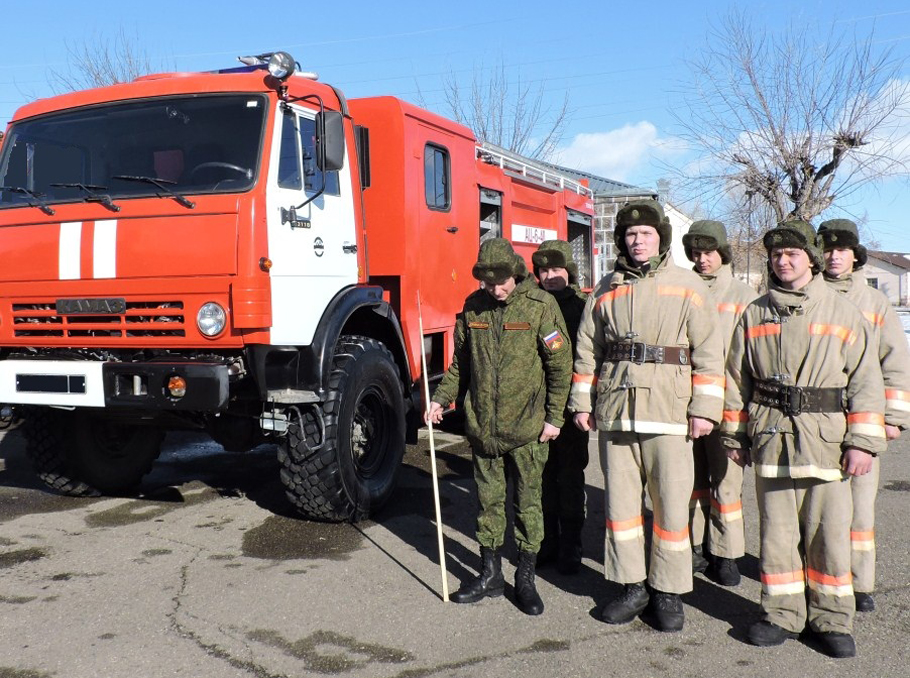
The essence of decision-making by the fire department management is the need to determine the most advantageous tactics of actions based on the conditions of the current situation. The basis of these decisions is disclosed in the tasks that will face the personnel of the fire service.The command staff, in turn, determines the fire extinguishing plan, the list of combat missions, the order of interaction between individual units and the schemes for providing material and technical means.
The task of the newly created operational headquarters will be to coordinate units and bring to them orders from the head. Timely notification of personnel about new introductory factors per se is a factor in ensuring effective fire control. Among the main tasks of managing forces and assets in a fire, timely response to changes in the situation can be singled out. The quality of identifying new trends allows us to formulate more adequate requirements and lower-level tasks for units involved in extinguishing fires. Now it is worthwhile to examine in more detail the levels at which control and coordination of the actions of the personnel of the fire service is carried out.
Management Structure
When forming the organizational structure, the principle of unity of command is taken as a basis. The main manager will be the fire extinguishing officer. Under his command is a temporary operational headquarters and units involved in hostilities. The principle of unity of command has proved its effectiveness by the historical experience of fire fighting and to this day remains valid. But at the same time, requirements for higher bodies of command and control in a fire increased, including the following:
- Knowledge of operational tactical documentation.
- Knowledge of the laws of fire development, methods of their localization and elimination.
- Knowledge of the capabilities of the entrusted personnel, its tactical characteristics and skills.
- The ability to make decisions in a timely manner, identifying priority areas of warfare.
- The ability to organize units, explaining to them combat missions.
- The ability to correctly calculate the means and forces to solve the tasks.
The ability to make adequate and informed decisions in a short time is considered the main indicator of the operational and tactical preparedness of the head of the quenching. The quality of command and control in a fire will directly depend on it. The management structure at the next level involves the creation of an operational headquarters. It is organized in cases where one person cannot control all the fire fighting processes. The presence of headquarters does not at all abolish the principle of sole command, but supplements it. Typically, such a control scheme is used in large fires, as well as when connecting several units.
The role of the operational headquarters in the management of the fire fighting process
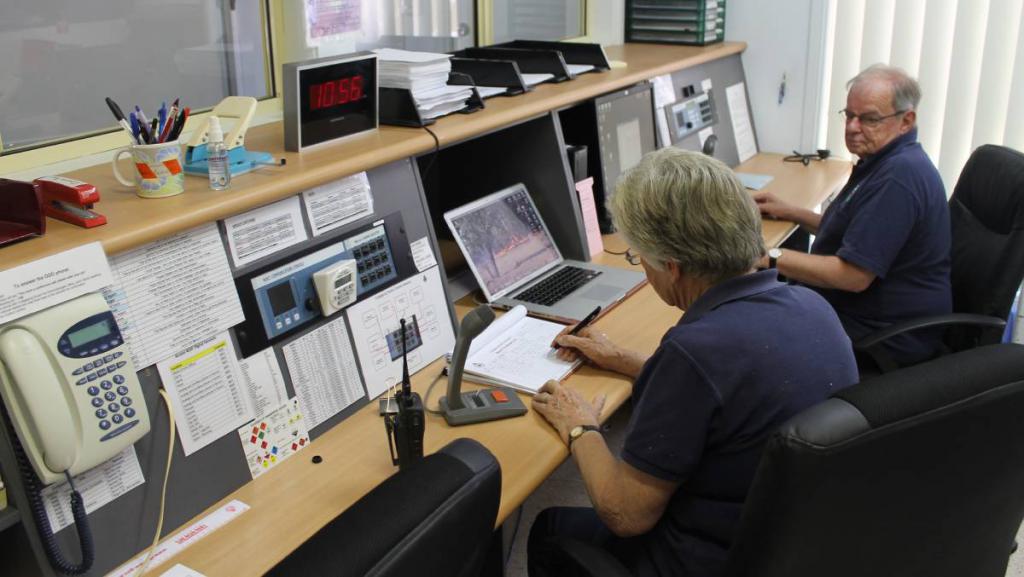
As already mentioned, on large and technologically difficult fire extinguishing fires, the operational headquarters takes over the functions of the main body for controlling forces and fire fighting means. Among his main tasks, one can note the maintenance of constant readiness of units and resources to fulfill the orders of the management. To effectively extinguish fires while managing forces and means, the headquarters needs constant information on the current situation. Operational data to the headquarters is supplied either by intelligence units or direct command officers receiving information from other sources. By conducting a timely analysis of the incoming information without waiting for a specific statement of tasks from the highest authorities, the headquarters can independently develop tactics of action and effective measures for fire fighting units. This is especially true of technological shortcomings and problems that impede the implementation of the tactical capabilities of personnel.
Under the condition of normal communication with the fire extinguishing manager and direct executors, the headquarters acts as a binder.This structure of command and control of forces in a fire implies that the operational command will ensure the delivery of higher orders to units. Also, at the headquarters, issues of technical and economic support related to the deployment of forces and further supply of personnel in the fire extinguishing zone can be resolved.
Principles of command and control in a fire
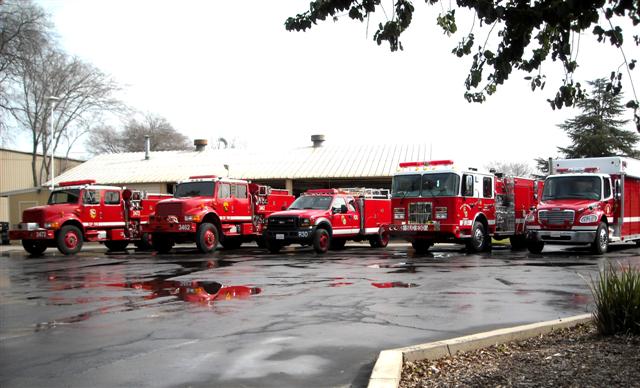
If the principles of the conduct of hostilities in case of fire to a large extent should be supported by units involved in the process of extinguishing the fire, then in this case we are talking about the leaders of the event as a whole. Based on the patterns of managing the resource base in a fire, a list of principles has been developed that contribute to successful command in solving tactical problems:
- The combination of decentralization and centralization. In fact, a balanced separation of functions between different bodies of command. At the same time, the main principle of unity of command remains the main one.
- The combination of flexibility and hardness. This principle of command and control in a fire is possible only in the conditions of constant receipt of clear information about the current situation at the scene. Moreover, regardless of the conditions and conditions in which the control is carried out, decisions must be transmitted confidently and firmly, but based on reliable information.
- The principle of personal responsibility. Both the effectiveness of the use of personnel forces and the expenditure of technical and material resources with the results of operational and tactical actions determine the personal responsibility of the leader in extinguishing a fire.
Prediction principle. Perhaps the most controversial principle, which is the ability of participants in the operational headquarters and the leader to provide for changes in the fire fighting situation. For this, the authorities at different levels should have an extremely complete picture of what is happening with the smallest details and characteristics. Often, the problems of informing are not so much in the plane of direct extraction of information with delivery, but in the very quality of this data. The more channels of information, the higher the risk of obtaining insufficiently reliable or frankly false data.
Fire extinguishing control
Effective firefighting resource management can be carried out only in conditions when the command has a clear belief that its tasks will be completed accurately and on time. This requires constant monitoring with the organization of a system for monitoring the actions of a managed link. In a structure with an operational headquarters, control is carried out by top-level employees, but if this command rank is absent, the control function is transferred to the head of the fire fighting. In addition, the head of the whole event should also check the quality of operations of the operational headquarters (again, if any) and other lower-level bodies that relate to the authorities. As for the subject of verification, first of all, the control of forces and equipment in a fire provides for control of the timeliness of receipt and the correct execution of combat missions. Along with this, the correspondence of the decisions being sent is checked for tactical design, the readiness of units to complete tasks, the quality of technical and material support, etc.
Conclusion
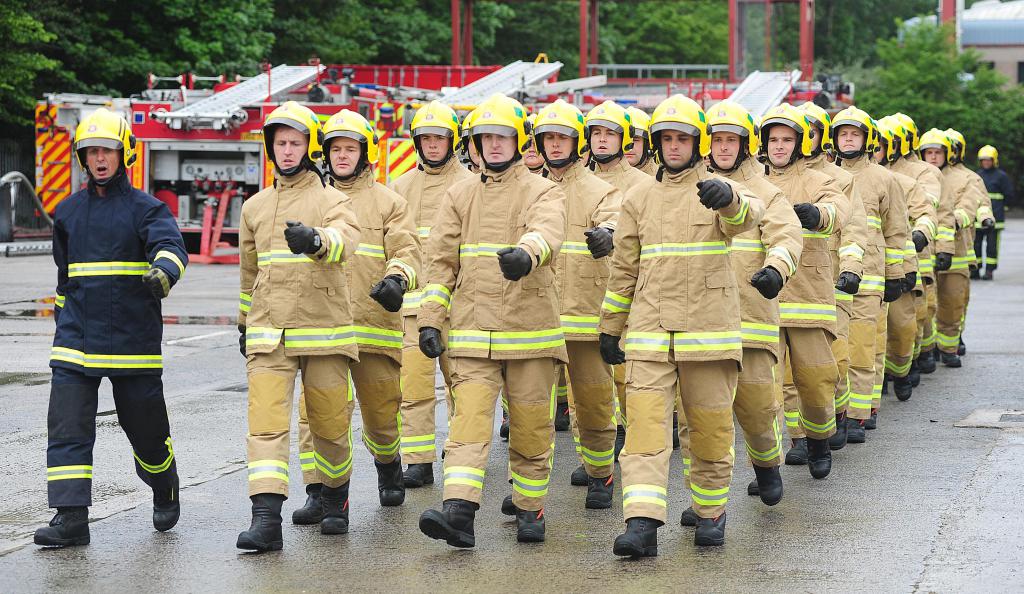
The success of an event aimed at extinguishing a fire depends on many factors. Of considerable importance, for example, is the technical tools, fire extinguishing materials and training of personnel. But if the management process was initially organized incorrectly, then under the most favorable conditions, one can hardly count on success. The organization begins by determining the powers of the participants in the fire.Management of forces and equipment in a fire comes from the leader, who takes full responsibility for the actions taken. This is followed by the level of the operational headquarters, which is responsible for direct interaction with units operating at the fire site. In each case, within the framework of their authority, the participants in the event should be guided by the principles of maximum effectiveness in the application of tactical capabilities, making adjustments for the specific situation and updated data on the situation.
